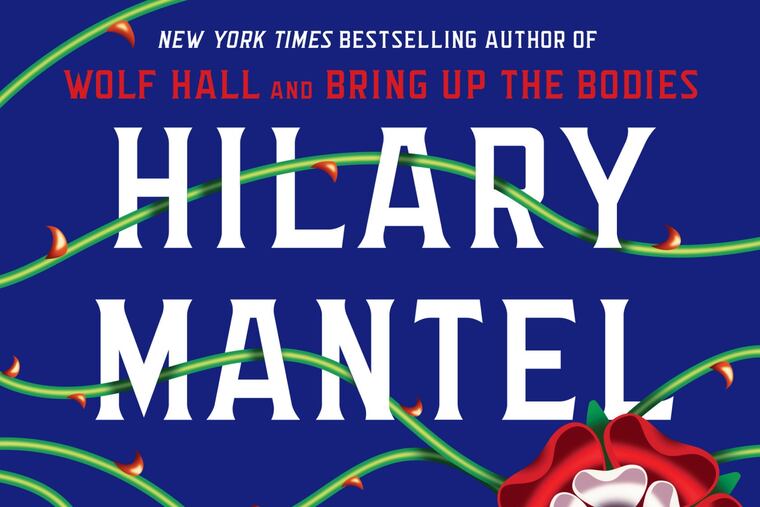‘The Mirror and the Light’ is a masterful finale to Hilary Mantel’s Cromwell trilogy | Book review
The past catches up with Henry VIII's wily adviser as he grapples with aristocratic foes after the execution of Anne Boleyn.

The Mirror and the Light
By Hilary Mantel
Henry Holt. 757 pp. $30
Reviewed by Wendy Smith
The past catches up with Thomas Cromwell in the searing finale of Hilary Mantel’s magnificent trilogy.
The dead have been slowly gathering around him since his mentor, Cardinal Wolsey, died in 2009′s Wolf Hall. Their voices grew insistent in Bring up the Bodies, when the moral consequences of Cromwell’s allegiance to King Henry VIII became apparent as he railroaded Anne Boleyn and five personal enemies to execution so that Henry could marry Jane Seymour.
In The Mirror and the Light, as Cromwell grapples with aristocratic foes who want to send him to the same fate, his own inner voices clamor for attention. His thoughts turn increasingly to the miserable childhood he has sought to leave behind and to his happy years in Antwerp and Florence, where he discovered a new world that offered a blacksmith’s son from Putney the chance to get ahead on the basis of brains and ferocious ambition. In May 1536, as Cromwell walks away from Anne Boleyn’s headless body, Mantel sets him on a collision course with the limits to those ambitions.
Back home after the execution, Cromwell scornfully dismisses the aristocrats who helped him get rid of Anne and who now expect his help in restoring Henry's castoff daughter Mary to favor and the royal succession. "Papists every one," Cromwell sneers, "who live on fantasies of the past." Now that he has done Henry's dirty work, he expects to sweep these old families from power and make rapid progress toward his primary goals: a reformed, Protestant church with an English-language Bible and a more egalitarian society that affords the common people better lives.
» READ MORE: Spring 2020's best books.
Not so fast, warns Thomas Wriothesley, one of the upwardly striving young men Cromwell nurtures as a protégé. "People have been talking," Wriothesley reports. "They say, look at what Cromwell has wreaked, in two years, on Wolsey's enemies. … They ask, who was the greatest of the cardinal's enemies? They answer, the king. So, they ask — when chance serves, what revenge will Thomas Cromwell seek on his sovereign?"
Cromwell, a master of intrigue, must surely know such murmurings are likely to have reached the king. Granted, Henry quickly makes him Keeper of the Privy Seal and continues to elevate his status, all the way to Lord Chamberlain. But there are ominous signs that the king’s support is shakier than it seems, and Cromwell does not always read Henry as well as he thinks. In Wolf Hall, Mantel invited her readers to enjoy watching Cromwell outsmart everyone else; in Bring up the Bodies, she made us wince as he applied his intelligence to murderous ends. In The Mirror and the Light, she builds suspense by turning us into alarmed onlookers who want desperately to seize him by the shoulders and cry, “Don’t you see what’s happening?”
Cromwell is still a nimble operator, and Mantel provides many scenes — a few too many, in the novel’s overstuffed middle section — of the elaborate maneuvering that also enlivened her first two Booker Prize-winning volumes. (Eustace Chapuys, suave ambassador of Emperor Charles V, is Cromwell’s favorite sparring partner, the prole-hating Duke of Norfolk the most odious.) He remains shrewd about laying economic foundations for the lasting change he seeks.
Dissolving the monasteries and leasing their land to wealthy laypeople, he knows, will cement the Reformation: “Prayers may be rewritten, but not leases.” But the dissolution of the monasteries sparks a popular rebellion that further shakes Henry’s faith in Cromwell and shows that the common people he wants to help do not necessarily share his religious views. They also reject Cromwell’s proposed registry of births, marriages, and deaths: He believes it will dignify ordinary folk by enabling them to trace their lineage as the nobility does; they regard it as a ploy to collect taxes.
“Can you make a new England?” Cromwell asks himself. “You can write new texts and destroy the old ones … but what was written before keeps showing through, inscribed on the rocks and carried on floodwater, surfacing from deep cold wells.” He ponders the intransigence of the past in December 1539, when it appears he has consolidated his hold on power with the arrival of a Protestant bride for Henry in the wake of Jane Seymour’s death in childbirth. Instead, Anne of Cleves’ instinctive recoil at the sight of the overweight, aging king (a nice feminist twist on the traditional story that Henry found her unattractive) initiates the final stages of Cromwell’s downfall.
Arrested in June 1540, Cromwell stoically accepts he has been defeated by the shady tactics he employed to remove obstacles from Henry’s path: “It seems there is no mercy in this world, but a kind of haphazard justice: men pay for crimes, but not necessarily their own.” Cromwell has always known that “the wolf that lives in man” lives in him, too. He is not surprised Wriothesley betrays him, and he instructs his son Gregory and nephew Richard to save themselves by disowning him. Mantel closes with a beautiful, chilling stream-of-consciousness monologue that shows Cromwell liberated at last from his lifelong striving.
As always, Mantel is clear-eyed yet compassionate in depicting her coldly calculating, covertly idealistic protagonist and the equally complex people he encounters in his rise and fall from power. Dense with resonant metaphors and alive with discomfiting ideas, The Mirror and the Light provides a fittingly Shakespearean resolution to Mantel’s magisterial work.
Smith is the author of “Real Life Drama: The Group Theatre and America, 1931-1940.” She wrote this review for the Washington Post.